'It just went to black': Local fire chiefs on blaze leveling First Congregational Church
SPENCER - Spencer Fire Chief Robert P. Parsons said it has been confirmed that the cause of the six-alarm fire that destroyed the historic First Congregational Church Friday night was a lightning strike.
“It has been confirmed to be lightning,” Parsons said Saturday morning. “We had a police officer that was doing a detail that he said he saw the church get struck by lightning. I just got another woman call me say she was outside with her kids and saw it get struck by lightning. We had two other witnesses there yesterday (Friday) that we spoke to in the marshal’s office that they saw lightning…Yes, it was lightning.”
Originally built for 600 worshippers, the First Congregational Church at 207 Main St. (Route 9) was reduced to rubble by an act of God.
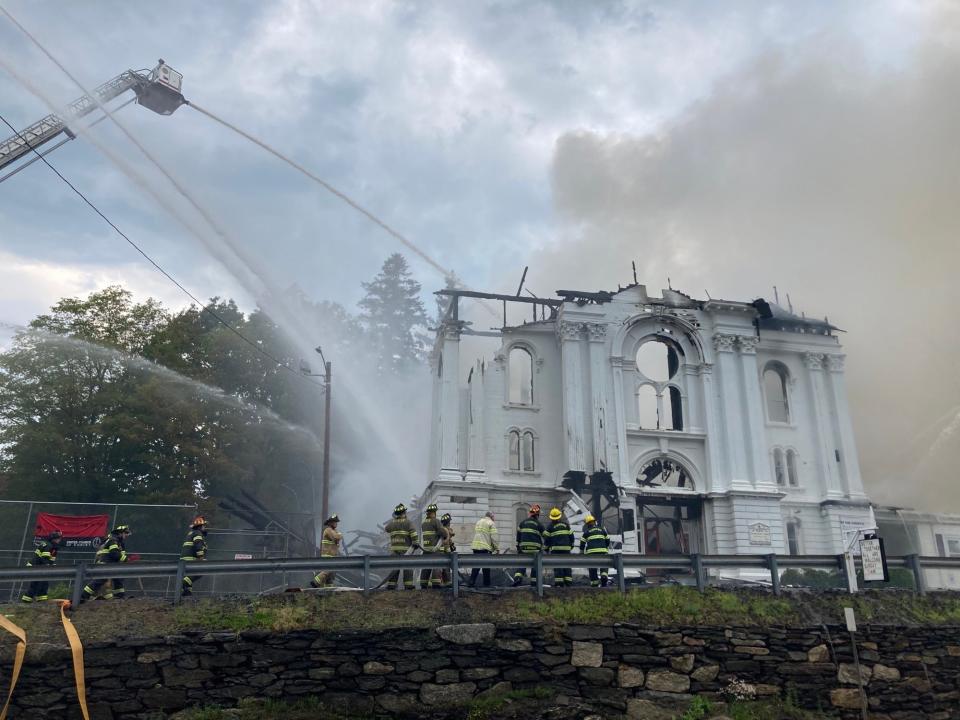
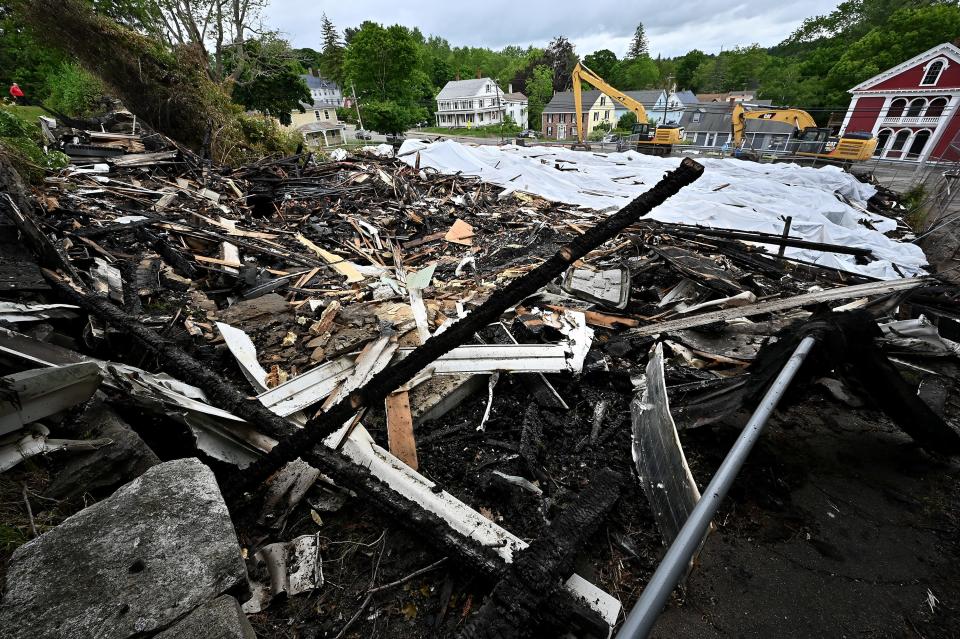
Parsons, who was vacationing in Maine for the weekend at the time of the fire, said Spencer has seen its share of bad storms in the past but nothing like the one caused by Friday’s lightning strike.
“We get a lot of bad storms usually where they’re in the north end of town,” he said. “Actually, the crew that was on duty, they were on the north end of town for a lightning strike at a house when this call came in. And this (the church) came in as a commercial fire alarm. We didn’t get a call for a lightning strike.”
Parsons said a crew of three firefighters, including his son Lt. Thomas Parsons, went to the church to investigate the alarm.
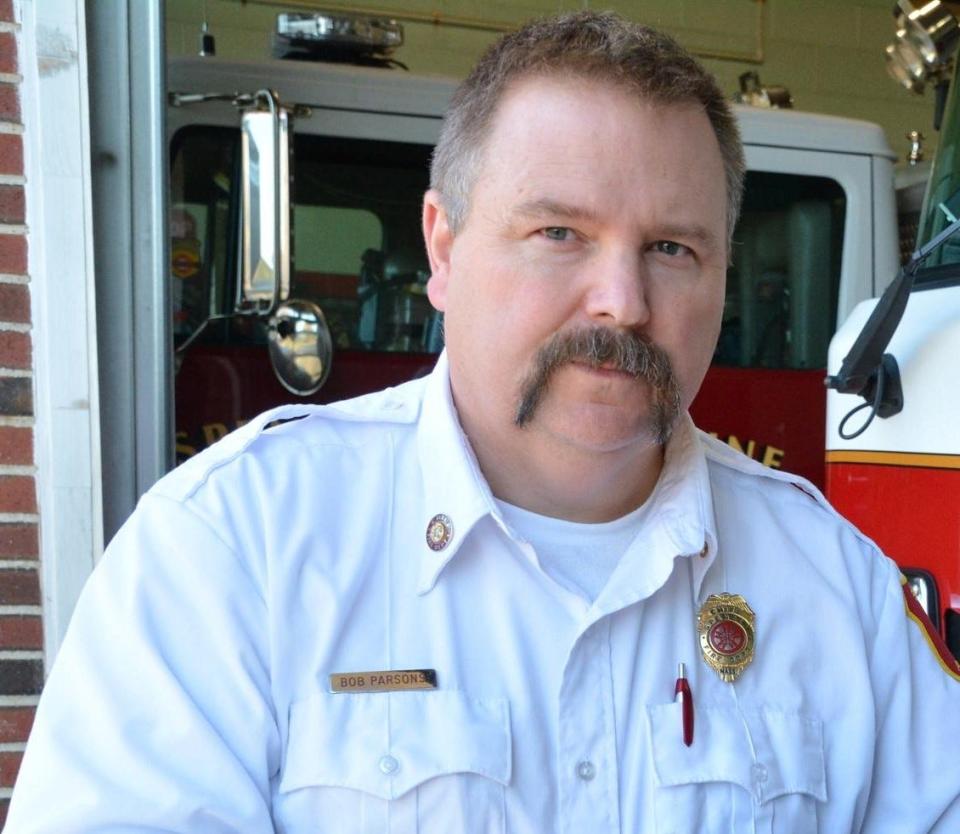
'Went to black'
“They’re up there all the time for fire alarms. And when they got up there, they had nothing showing from the outside or anything,” Parsons said. “They were inside investigating. They’re checking the building, couldn’t see anything, couldn’t see anything as they’re going up. And then someone outside reported a puff of smoke coming out of the steeple. And then, when they went up to the steeple, they had a light smoke condition. They could see some fire. They call back for some handlines to be brought up into the building for the steeple. And, they said, in a matter of seconds, it just went to black.”
More: First Congregational of Spencer parishioners to meet Sunday at Leicester church
When it went to “black,” the firefighters, who did bring their air masks but did not have them on, began to choke on the dense smoke, Parsons said. The firefighters had to crunch low to the floor and rushed down the cramped staircase of the steeple to get out of the church as fast as they could, Parsons said.
“By the time they got down there was a backdraft that occurred, blew all the windows out. The smoke, everything came out. All the eaves of the building and off it went,” Parsons said. “The whole steeple was enveloped in smoke at that point. And, in 30 minutes … it was gone.”
Parsons said other veteran fire chiefs at the scene said they had never seen a fire burn so hot or as fast.
Despite not being there in person, Parsons was listening on his radio as the fire unfolded and gives high marks to his son.
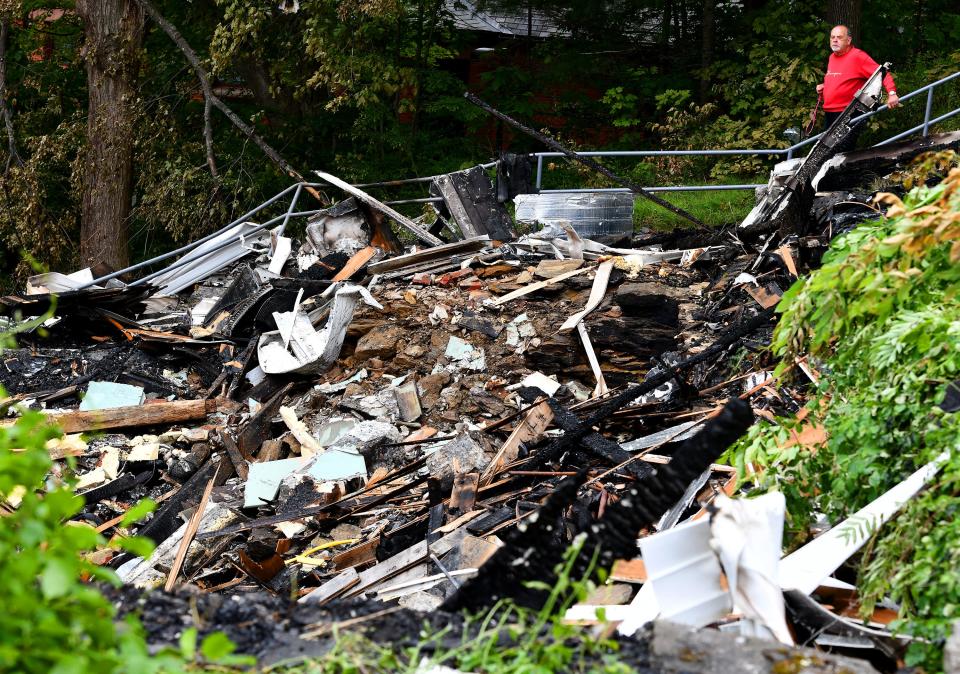
“He was the initial to the commander. He was calm and cool. I give him a lot of credit on the radio,” Parsons said of his son. “The cops were screaming when it took off. He was like, ‘Give me working fire. Give me second alarm,’ just like that.”
Parsons’ best friend and godfather to his son, Southbridge Fire Chief Paul F. Normandin Jr., was traveling to the potential fire scene before it was a disaster.
“The police department got there. They didn’t see anything showing, no smoke, no fire, nothing visible. The engine got there from Spencer with Thomas (Parsons) in charge. He reported the same thing,” Normandin said. “When I was turning onto Pleasant Street in the center of Rochdale, heading towards my home, I heard screaming and ‘Strike the next alarm,’ and things like that. So I scooted right up there.”
When he arrived, Normandin immediately took over command.
“I said to Thomas (Parsons), ‘Do you want me to take command?’ ” Normandin recalled. “And I couldn’t even finish the sentence. He was wide eyed and said, ‘Yes,'…I probably set up my command structure within the first six or seven minutes of taking charge.”
Wary of steeple collapsing
Normandin said his biggest concern was that the steeple was going to collapse and getting all the firefighters and the trucks out of harm’s way.
“Spencer’s two engines and ladder was in front of the building on the upper driveway,” Normandin said. “We had all the hoses hitched up to those vehicles. We disconnected everything as fast as we could to back them out of there and get them out of the collapse zone area…The Spencer ladder truck was pretty committed. So by the time their bucket came down, I could see the steeple leaning, listing to a side. We basically just told them, keep the hoses attached, pull everything in, get the chalk box out and back the truck as far as you can with the hoses still attached. It was very, very hair-raising. It was an event that not only could I lose some guys operating that vehicle but also a $1.5 million for the town of Spencer.”
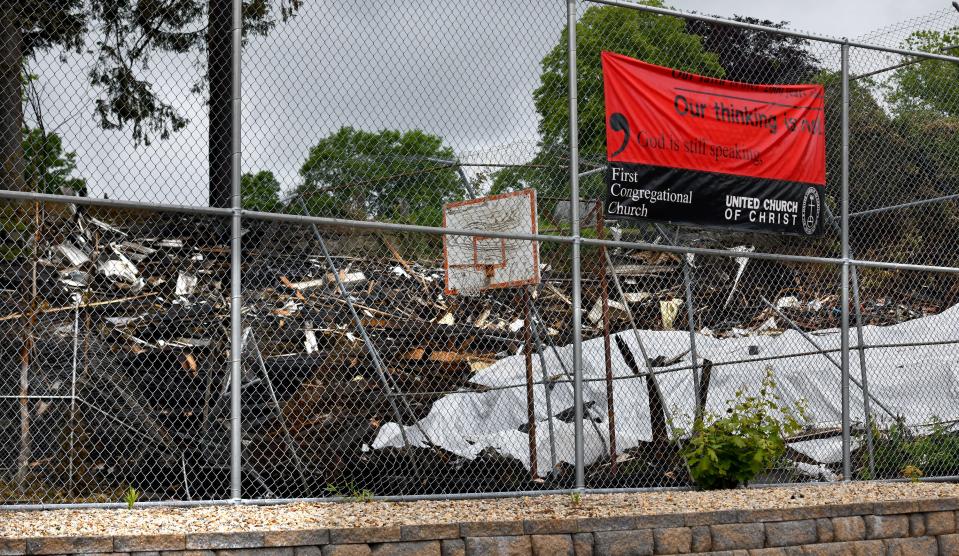
Parsons said they were lucky they didn’t lose any trucks in the fire.
“This is the unfortunate thing because they went there for a fire alarm. We always said that if it was going to burn, we would not park up on that terrace because we’re in the collapse zone,” Parsons said. “Our trucks were all parked on that terrace when the fire took off. And they were chopping hoses with axes so they could get the trucks out of there. A ladder truck was up there…they drove it backwards with all the hoses still attached to it, just to try to get away from the building. If that steeple had fallen forward, instead of back, it probably would have fallen on some trucks.”
“Everybody was eyeballing the steeple. We knew it was going but we didn’t know what direction it was going in,” Normandin said. “It if had fallen on Main Street, I think we would have, obviously, more of a debris field. But I am very thankful that it fell within itself, somewhat other than the basketball course (between the Senior Living at Prouty and the church).”
“I owe him a dinner now because he did a fantastic job,” Parsons said. “If I was here, it would have been a handful for me as well.”
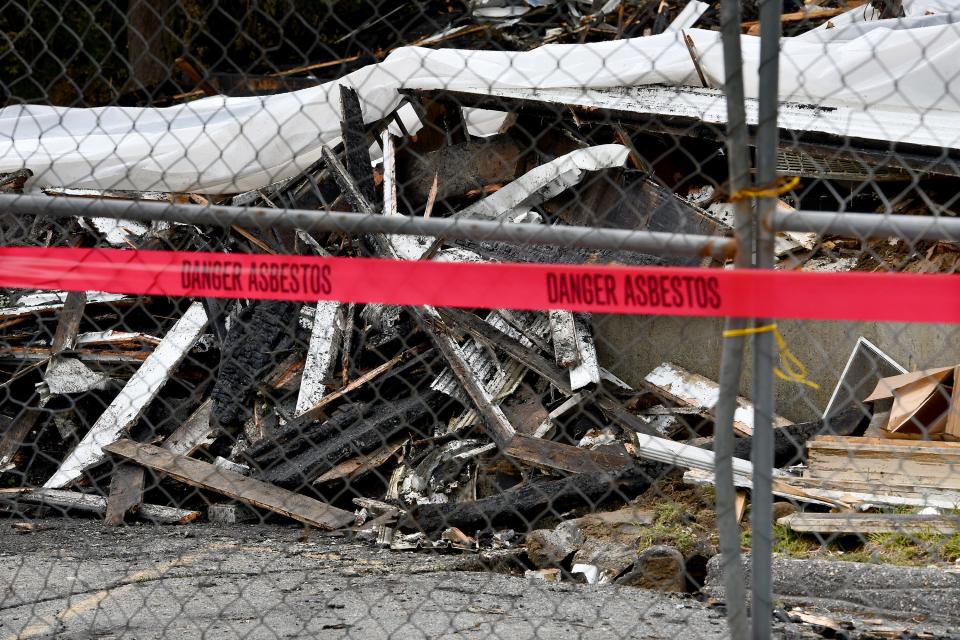
Tapping into pond
At one point, the town’s water department told the fire department that they had to get off the municipal system because they were draining it. So the fire department had to bring in mutual aid from Webster, Dudley and Oxford to connect to a pond down on Maple Street, Parsons said. In addition, coverage for the station came as far as Sterling and Ware, he said.
Late Friday night, a crane removed the facade of the church, the only part of the structure still standing after the fire.
“It was 2:27 (p.m.) when the call came in. By 10 o’clock, they were tearing down the remaining front section (of the church) because we were afraid it was going to fall on Route 9,” Parsons said. “It’s a pile of rubble today.”
Senior Living at Prouty next to the church at 195 Main St. was evacuated of its tenants. According to the two chiefs, the roof at Senior Living at Prouty suffered three holes from burning embers.
While the fire destroyed a town landmark and a long-standing place of faith and worship, Parsons and Normandin agree that battling the blaze was a prime example of mutual aid at its finest.
“I knew Bob (Parsons) was away and I always keep an extra ear open, especially when the chief’s out of town. I do the same thing with my area chiefs and Bob. When I’m out of town, I contact them all,” Normandin said. “We have a great, great friendship and mutual aid network. So we all take care of each other. That’s the way we do it. Every single day, no matter what it is, that’s what we do.”
No one was in the church at the time of the fire.
This article originally appeared on Telegram & Gazette: Spencer, Northbridge fire chiefs on First Congregational blaze

 money
money 